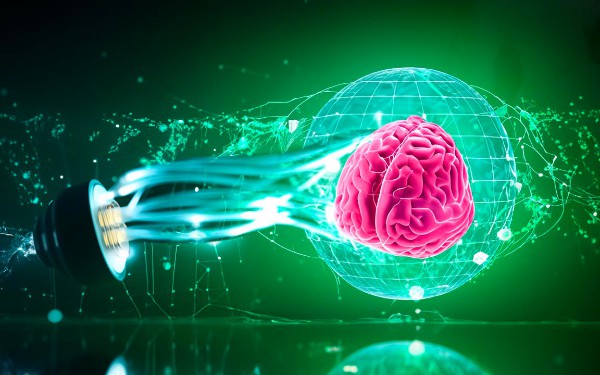 Be Anything You Want, but Not a Programmer Be Anything You Want, but Not a Programmer Nov 10th 2023, 15:13, by Mohamed aboelez Here's a valuable piece of advice for anyone embarking on a new learning journey: disregard individuals who derive pleasure from belittling beginners. Some individuals take delight in undermining novices, perhaps out of insecurity or past experiences of being bullied, which gives them a misguided sense of power. Regardless of their reasons, if someone is trying to make you feel inadequate for trying something new, don't pay attention to them. They simply lack empathy. Back in 2012, Jeff Attwood wrote an article advising against learning how to code. I can't help but wonder if he'll give the same advice to his own children when they express a desire to follow in their father's footsteps. It's highly unlikely. He'll likely enthusiastically guide them through the coding process, emphasizing how enjoyable and rewarding it can be encouraging them to pursue it wholeheartedly. Yet, according to his previous stance, coding is a pursuit exclusively reserved for Jeff and his kids. |  Unveiling 24 Pearls of My Executive Odyssey Unveiling 24 Pearls of My Executive Odyssey Nov 10th 2023, 15:09, by Gaurav Agarwaal As I stand on the threshold of a new chapter, my seven-year journey at Avanade is coming to an end. It's a moment to reflect on the wisdom gained from successes and challenges that have shaped me as a leader. In October 2016, I embarked on a transformative shift, leaving behind a 13-year tenure at Microsoft to join the dynamic world of Avanade. This transition marked a profound change from Technology Thought Leadership, Strategic partnerships, and Product and platform selling to a focus on Services business, Systems integration domain, solutions engineering, practice development with pseudo P&L responsibilities, GTM strategy, and managing the full solution lifecycle with engaging client interaction (+ and the amazing Accenture counterparts on almost every opportunity). |  Transitioning From Groovy to Kotlin for Gradle Android Projects Transitioning From Groovy to Kotlin for Gradle Android Projects Nov 10th 2023, 14:47, by Volha Kurcheuskaya The world of Android app development is constantly evolving, and so are the tools and languages used to build these apps. Gradle, a popular build system, has been an integral part of Android development for years. In the past, Gradle build scripts for Android projects were written in Groovy, but with the introduction of Kotlin, developers now have the option to write their build scripts in a more modern and concise language. In this article, we'll explore the transition from Groovy to Kotlin for Gradle Android projects and discuss the benefits and steps involved in making this shift. Why Transition to Kotlin for Gradle? - Modern language: Kotlin is a modern, statically typed language that offers features not present in Groovy, making build scripts more concise and expressive. It is designed to be fully interoperable with Java, which is crucial for Android development.
- Type safety: Kotlin is known for its strong type safety, reducing the likelihood of runtime errors. With Groovy, you might encounter runtime issues due to dynamic typing.
- Improved tooling support: The Android Studio IDE has excellent support for Kotlin, making it easier to write, read, and maintain Gradle scripts. Code completion, refactoring, and error checking are some of the benefits you'll experience when using Kotlin.
- Conciseness: Kotlin's concise syntax can lead to shorter, more readable code. This is particularly beneficial in build scripts, which often involve complex logic.
Transitioning to Kotlin Step-By-Step Here's a step-by-step guide on how to transition from Groovy to Kotlin for Gradle Android projects: |  The Role of AI Ethics: Balancing Innovation with Social Responsibility The Role of AI Ethics: Balancing Innovation with Social Responsibility Nov 10th 2023, 14:27, by Frederic Jacquet Artificial Intelligence (AI) represents a rapidly expanding domain characterized by its swiftly evolving technologies and methodologies. Its transformative potential spans across various sectors of the economy and society. Nonetheless, it's crucial to acknowledge the ethical dilemmas that AI poses. Companies at the forefront of AI development, alongside businesses, communities, administrations, and individuals incorporating it into their daily lives, must remain mindful of these issues. The Primary Domains of Artificial Intelligence AI can be categorized into various domains, each with unique attributes tailored to achieve specific goals in particular applications. These objectives and applications stem from the technical capabilities and specific challenges inherent in the respective domains, addressing diverse use cases. |  IoT Security: Strategies, Challenges, and Essential Tools IoT Security: Strategies, Challenges, and Essential Tools Nov 10th 2023, 11:49, by Deep Manishkumar Dave The Internet of Things (IoT) has ushered in a new era of connectivity, transforming the way we live, work, and interact with our surroundings. It encompasses a vast network of devices, ranging from everyday appliances to industrial machinery, all connected and exchanging data. While this interconnectedness brings convenience and efficiency, it also presents a multitude of security challenges. In this article, we will delve into the complexities of IoT security and explore strategies, best practices, and essential tools to safeguard this dynamic ecosystem. Understanding IoT Security Challenges - Lack of Encryption: One of the primary challenges in IoT security is the lack of robust encryption. Many IoT devices transmit data without adequate encryption, leaving it vulnerable to interception and manipulation. Encryption is a fundamental defense mechanism against unauthorized access and data compromise.
- Insufficient Testing and Updating: The rapid proliferation of IoT devices often leads to a rush to market, resulting in inadequate security testing and infrequent updates. This leaves devices and systems exposed to vulnerabilities and exploits.
- Default Password Risks: Weak or default passwords on IoT devices make them susceptible to brute-force attacks. Manufacturers must encourage users to set strong, unique passwords to protect against unauthorized access.
- IoT Malware and Ransomware: The increasing number of IoT devices has given rise to malware and ransomware attacks. These threats can compromise data privacy, demand ransoms for data recovery, and pose significant challenges for IoT security.
- IoT Botnets and Cryptocurrency: IoT botnets have the potential to manipulate data privacy, posing significant risks to the cryptocurrency market and blockchain technologies. Malicious actors can exploit vulnerabilities in IoT devices to create botnets for various purposes.
- Inadequate Device Security: Many IoT devices lack proper security features, making them susceptible to hacking, data theft, and unauthorized access. Strengthening device security is paramount to addressing this challenge.
Strategies to Address IoT Security Challenges - Encryption and Strong Authentication: Implement robust encryption methods and enforce strong authentication mechanisms to protect data confidentiality and integrity during transmission and storage.
- Regular Testing and Updates: Prioritize thorough security testing and frequent updates for IoT devices. Regular updates are essential to patch vulnerabilities and improve overall resilience.
- Password Hygiene: Educate users about the importance of setting strong, unique passwords for IoT devices. Avoid default credentials, which are a common target for brute-force attacks.
- IoT Security Best Practices: Promote industry-wide best practices for IoT security, including secure coding, vulnerability management, and adherence to recognized security standards.
- Network Security Measures: Deploy robust network security measures, including firewalls and intrusion detection systems, to protect against network-based attacks such as denial-of-service (DoS) attacks.
- Standardization Efforts: Advocate for IoT security standards and protocols to ensure consistency and compatibility across devices and systems. Standardization promotes secure development practices.
- Privacy by Design: Prioritize privacy by design principles to protect user data. Be transparent about data collection and usage, and respect individuals' rights to control their information.
- Firmware and Software Updates: Promptly release security patches and updates for IoT devices to address software vulnerabilities. Keep devices up-to-date to mitigate potential threats.
- Employee Training: Educate employees and contractors about IoT security risks and insider threat awareness. Security awareness training is essential to create a security-conscious culture.
Essential IoT Security Tools - Device Management Platforms: Device management platforms like AWS IoT Device Management and Microsoft Azure IoT Hub provide centralized control and security features for IoT devices, including provisioning, authentication, and monitoring.
- Security Information and Event Management (SIEM) Systems: SIEM systems such as Splunk and IBM QRadar offer real-time monitoring and analysis of security events in IoT environments, aiding in threat detection and response.
- IoT Security Gateways: IoT security gateways, like Cisco IoT Security, act as intermediaries between IoT devices and networks, implementing security policies and inspecting traffic for threats.
- Blockchain Technology: Blockchain enhances data security and integrity in IoT by ensuring data immutability. Platforms like IOTA and VeChain provide blockchain solutions tailored for IoT security.
- Vulnerability Scanners: Vulnerability scanners like Nessus and Qualys identify and remediate vulnerabilities in IoT devices and networks through penetration testing and assessments.
- IoT Security Analytics Tools: Security analytics tools like Darktrace and Vectra AI use machine learning to detect abnormal behavior patterns in IoT networks, aiding in threat identification.
- Network Segmentation Solutions: Network segmentation tools, including firewalls like Palo Alto Networks and Cisco ASA, isolate IoT devices from critical networks, limiting potential attack surfaces.
- IoT Security Testing Services: Third-party security testing services and tools assess the security of IoT devices and applications through penetration testing and vulnerability assessments.
Conclusion Securing the IoT is an ongoing endeavor that demands vigilance and collaboration. By implementing robust security strategies, adhering to best practices, and leveraging essential IoT security tools, we can navigate the intricate landscape of IoT security challenges. Software developers, organizations, and users all play pivotal roles in fortifying IoT ecosystems against evolving threats, ensuring a safer and more resilient connected world. |  IOS App Modularization With Apollo And SPM IOS App Modularization With Apollo And SPM Nov 10th 2023, 11:48, by Aitor Pagan In the modern development landscape, GraphQL has revolutionized the way we think about APIs and data retrieval. When it comes to iOS development, integrating GraphQL can be a breeze, thanks to libraries like Apollo. But how do you take it a step further and make your implementation modular using Swift Package Manager (SPM)? This article will guide you through the benefits, drawbacks, and step-by-step process of achieving this modular approach. Why Apollo? Apollo has become one of the most popular GraphQL clients owing to its robust set of features, including intelligent caching, real-time updates, and a strong type system. But one of its less talked-about advantages is its compatibility with Swift and native support for modularization through SPM. |  From Bricks to Masterpieces: The Artistry of Building Quality in Agile From Bricks to Masterpieces: The Artistry of Building Quality in Agile Nov 10th 2023, 11:20, by Dr. Srijith Sreenivasan When I visited Paris a few months back, my colleagues were kind enough to take me on a drive to see some of Paris' iconic monuments. We passed by the Notre Dame Cathedral, which is undergoing renovation. I was fascinated by the pure might of it and was reminded of a story of three bricklayers who were asked by the architect what they were doing. Most of you may know the story, so I'll keep it brief: the first bricklayer replied, "I am laying bricks." The second one said, "I am constructing a wall." The third one said, "I am building a cathedral." (The cathedral in this parable is considered to be St Paul's Cathedral of London, but there are variations relating it to Notre Dame as well.) This story is usually used to articulate the meaning of a higher purpose. I am drawing yet another message from it - that of high-quality artistry or craftsmanship. The person who was building the cathedral saw the higher purpose, of course, and ensured that he was creatively contributing to it, which ultimately led to a masterpiece. The same trait of artistry could be found in works of wonder such as a symphony, a portrait, a building, a sports car, or even a fine dining experience. All of it starts with a skilled and passionate "bricklayer" giving their best. |  Comparative Analysis of Open Source Cluster Management Systems: Kubernetes vs. Apache Mesos Comparative Analysis of Open Source Cluster Management Systems: Kubernetes vs. Apache Mesos Nov 10th 2023, 11:17, by Nikita Vetoshkin Cluster management systems are critical software solutions that enable the efficient allocation and utilization of computing resources in a network of interconnected machines. No doubt, they play a vital role in modern computing by ensuring scalability, high availability, and effective resource management, making them essential for running complex applications, managing data centers, and further multiplying the power of distributed computing. As reported by National Grid ESO, data centres, despite all advancements, still account for a significant 1% of global electricity consumption, and that is where Cluster Management Systems might play a crucial role in enhancing energy efficiency. Before we dive into the details, it's important to note that this article is not about declaring one system as the "better" choice. Instead, we're starting a journey to compare and contrast two prominent open-source cluster management systems, Kubernetes and Apache Mesos, for they have quite different approaches. We'll shine a light on their unique features, strengths, and weaknesses, helping one make informed decisions based on one's specific needs. |  Sample Data Generation With Built-In Database Capabilities Sample Data Generation With Built-In Database Capabilities Nov 10th 2023, 11:02, by Denis Magda There are many ways to generate dummy data for a database. You can create a data generator, use a mock data service, or get a subset of your production data. Additionally, many databases offer built-in capabilities for producing synthetic data. In this article, you'll learn how to use special database functions, hierarchical queries, and recursive Common Table Expressions (CTEs) to generate a sample dataset in PostgreSQL, MySQL, Oracle, and SQL Server. |  Moving To Capability-Based Security With Flow: A Critical Evolution in Blockchain Security Moving To Capability-Based Security With Flow: A Critical Evolution in Blockchain Security Nov 10th 2023, 10:38, by Alvin Lee Flow is a permissionless layer-1 blockchain built to support the high-scale use cases of games, virtual worlds, and the digital assets that power them. The blockchain was created by the team behind Cryptokitties, Dapper Labs, and NBA Top Shot. One core attribute that differentiates flow from the other blockchains is its usage of capability-based access control. At its core, capability-based access control creates tokens of authority to give stakeholders selective access to certain resources without sharing everything. | |
Comments
Post a Comment